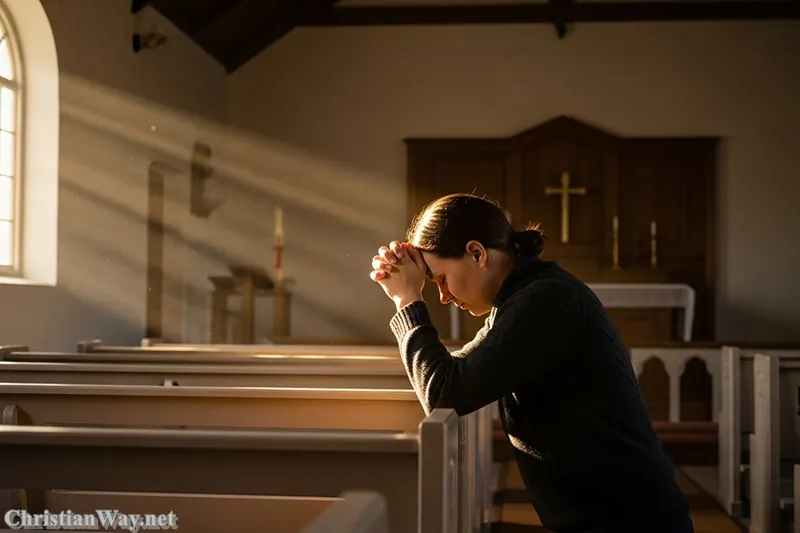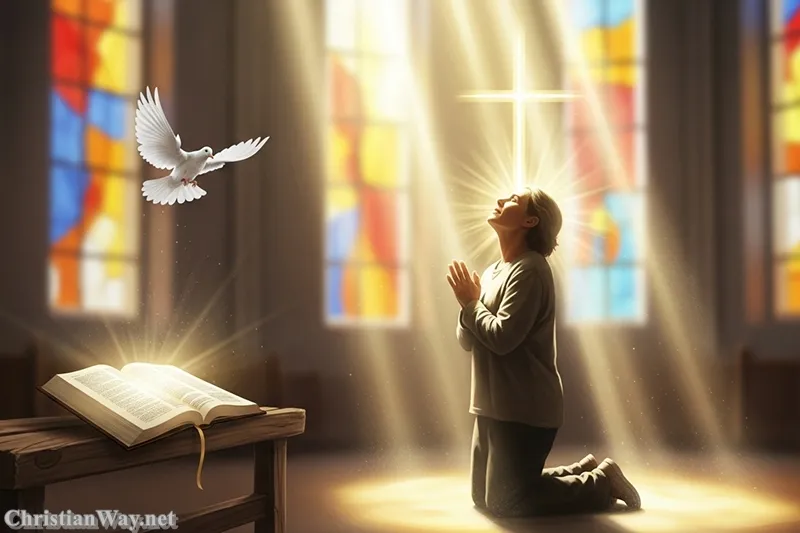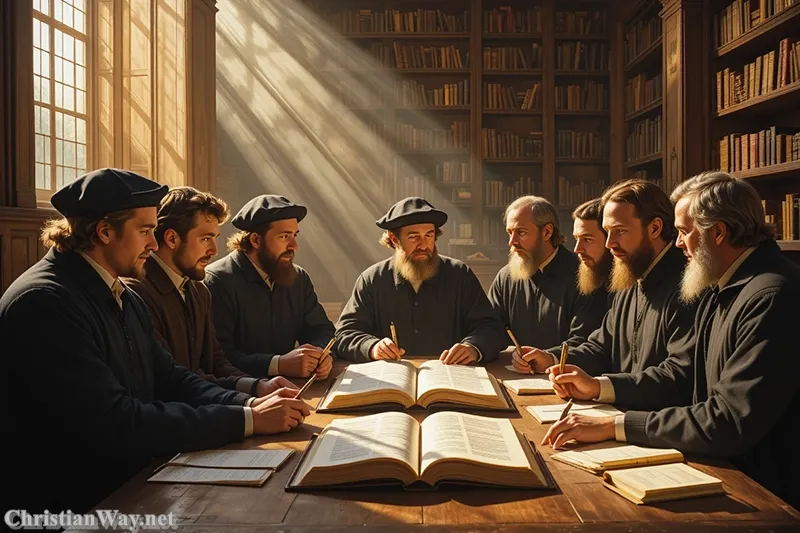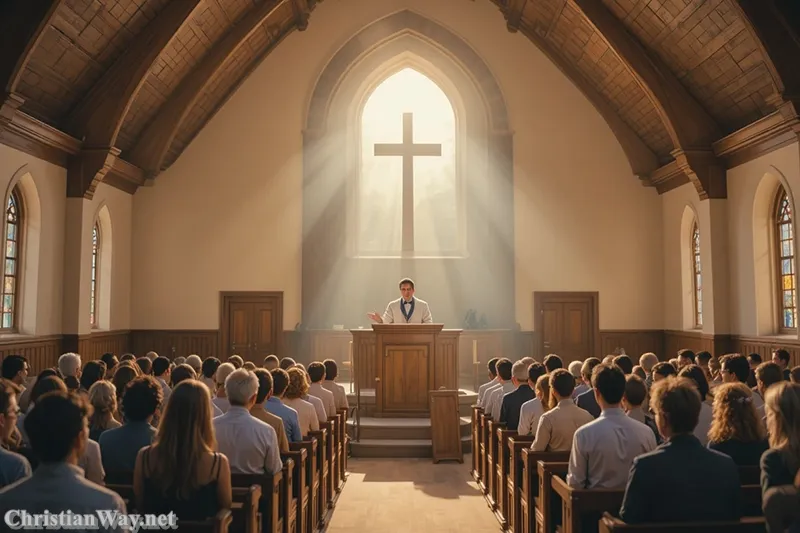Every Christian heart, at one time or another, wonders what it truly means to belong to the Church. Is the Church a building we enter, a congregation we join, a denomination we identify with—or is it something deeper, something spiritual, invisible even to our eyes? Within Protestant theology, this question led to one of the most distinctive and beautiful ideas in Christian thought: the Invisible Church — the unseen fellowship of all true believers in Jesus Christ, known perfectly only to God.
This concept emerged not out of rebellion against visible institutions, but out of a deep yearning to describe the mysterious unity that binds all Christians who live by faith, no matter where they are, what name they bear, or which denomination they attend. It is an idea that seeks to honor the work of the Holy Spirit — who, beyond all human boundaries and imperfections, gathers together the redeemed into one spiritual body of Christ.
The Visible and the Invisible: A Distinction Born of Faith
In Scripture, we see both dimensions of the Church — visible and invisible. The visible Church is the community of believers gathered in worship, sacraments, and service. It has structure, leadership, and history. Yet within that structure lives a mystery far greater than any institution can contain: the invisible communion of hearts truly united to Christ by grace and faith.

Protestant Reformers such as Martin Luther and John Calvin were deeply aware that not everyone who outwardly belonged to the Church necessarily possessed genuine faith. They looked to the words of Christ Himself:
“Not everyone who says to me, ‘Lord, Lord,’ will enter the kingdom of heaven,
but only the one who does the will of my Father who is in heaven.”
— Matthew 7:21
Thus, they distinguished between the visible church—the earthly gathering of all who profess faith and participate in the sacraments—and the invisible church, made up of all who are truly regenerated by the Holy Spirit and belong to God’s eternal kingdom.
This was not a way of despising the visible Church, but of acknowledging that the reality of salvation transcends human eyes. The invisible Church is the Church as God sees it, not as we see it. It consists of those who truly live in Christ, whether or not we recognize them as such.
The Biblical Foundations of the Invisible Church
Scripture speaks again and again of a people known intimately by God, chosen not by outward signs but by the inner reality of faith.
“The Lord knows those who are His.”
— 2 Timothy 2:19
The Apostle Paul often described the Church in spiritual rather than institutional terms. He called it “the Body of Christ” (Ephesians 1:22–23), a reality that cannot be contained within a single organization. He spoke of believers as “living stones” built into a spiritual house (1 Peter 2:5), and he reminded the Romans that “not all who are descended from Israel are Israel” (Romans 9:6)—a profound statement that faith, not heritage, defines the people of God.
In John’s Gospel, Jesus describes His flock with the same hidden intimacy:
“My sheep hear my voice; I know them, and they follow me.”
— John 10:27
These passages reveal that God alone knows the hearts of His people. The true Church, therefore, cannot be perfectly drawn on any map or captured in any membership roll. It exists wherever faith in Christ is alive, even in the most unexpected places.
The Reformation and the Recovery of Spiritual Reality
The idea of the invisible Church gained prominence during the Protestant Reformation, especially in the writings of John Calvin. Calvin described the invisible Church as “that which is actually in God’s presence, into which none are received but those who are the children of God by grace and true members of Christ by sanctification of the Holy Spirit.”
This view emerged partly in response to the visible corruption and divisions of the institutional Church in the sixteenth century. The Reformers wanted to affirm that the Church’s true essence was not destroyed by human failure. Even when institutions falter, God continues to preserve His people — the true Church invisible to human sight, yet eternally secure in Christ.
Luther also spoke of this hidden communion, declaring that “the holy Christian Church is an assembly of all believers under one Head, Christ,” and that it is “not bound to any place, person, or ceremony.”
This emphasis on the invisible Church served two purposes:
- It protected the integrity of the Gospel against the notion that salvation depends merely on outward association with an institution.
- It comforted believers by reminding them that their faith connects them to a far greater family — the universal communion of saints united by the Spirit, not by denomination.
The Unity of Believers Beyond Denominations
One of the most profound implications of the invisible Church is its vision of unity. Despite visible divisions between denominations, Protestant theology affirms that all true believers are one in Christ.
“There is one body and one Spirit—just as you were called to one hope when you were called—one Lord, one faith, one baptism; one God and Father of all.”
— Ephesians 4:4–6
This unity is not built on uniformity of practice or tradition, but on the living bond of faith in Jesus Christ. It allows Christians from different traditions to recognize one another as brothers and sisters, even amid doctrinal differences.
While visible unity remains a goal and a calling — one that Christ Himself prayed for (“that they may all be one,” John 17:21) — the invisible unity of believers already exists in the heart of God. It is a unity rooted not in external organization, but in grace.
The Church as Known to God Alone
The invisible Church, as Protestants understand it, is the Church from God’s perspective. We can see who attends, who preaches, who serves, who leads — but only God can see who truly believes.
This distinction invites deep humility. It reminds us that we cannot judge the salvation of others, nor boast of our own belonging. The true Church is not a human achievement but a divine mystery.
In this sense, the invisible Church is both comfort and warning:
- Comfort, because no one who truly believes in Christ can ever be excluded from His Body, even if they live in isolation, persecution, or outside formal structures.
- Warning, because outward participation in religion does not guarantee salvation if faith is absent.
Jesus Himself captured this paradox in His parable of the wheat and the weeds (Matthew 13:24–30). The field — the visible Church — contains both the true and the false, but the final separation belongs only to God.
The Sacraments and the Invisible Church
Protestant theology also had to grapple with how this invisible reality relates to visible means of grace like baptism and the Lord’s Supper. Most Reformers held these sacraments in deep reverence, yet they insisted that their power lies not in the ritual itself but in faith.
As Luther wrote, “It is not the water that does such great things, but the word of God in and with the water, and faith which trusts this word of God.”
Thus, even though sacraments are outward and visible, their saving effect belongs only to those who receive them inwardly by faith. The invisible Church, then, is not separated from the visible Church’s sacraments, but fulfills them spiritually — for the outward sign points to an inward grace that only God can see.
The Invisible Church and Christian Life
If the invisible Church is real, it must shape how we live and see one another. Every person we meet may be a hidden saint, known to God alone. Every act of kindness may unite us more deeply to this unseen Body.
In practical terms, this belief nurtures humility and hope. We are called not to measure others by outward standards, but to trust that God is at work in countless hearts beyond our knowing. It also reminds us that faith is not about belonging to a perfect institution, but about living in a genuine relationship with Christ — a relationship that unites us to all others who love Him.
The invisible Church becomes, therefore, a vision of hope amid division, a whisper of eternity amid human frailty. It tells us that the Church’s foundation is not in human authority or success, but in the unshakeable grace of God.
A Hidden Communion, Yet a Living Witness
Though invisible in its fullness, this Church is not absent from the world. Its presence is revealed through love, mercy, and holiness — the fruit of the Spirit shining through imperfect people.
“By this everyone will know that you are my disciples, if you love one another.”
— John 13:35
When Christians live in love, they make visible what is invisible: the reality of Christ’s Body in the world. The invisible Church becomes tangible in every act of forgiveness, every prayer for peace, every moment of faithful witness.
Thus, the invisible and visible are not opposites but companions. One reveals what the other contains; one is God’s view, the other ours.
Reflect and Pray
The Protestant idea of the Invisible Church invites us into a deeper humility before the mystery of God’s people. It reminds us that the true Church is not built by human hands, nor confined to any earthly boundary. It lives in the hearts of those who belong to Christ — past, present, and future — a communion known perfectly to God alone.
Let us, then, cherish both the visible fellowship of believers and the unseen unity that binds us all together in the Spirit. Let us pray not to define the Church by what we can see, but to love faithfully all those whom God has called His own.
Prayer:
Lord Jesus Christ,
You who see the hearts of all and gather Your people from every corner of the earth,
teach us to love the Church as You do — both in what we can see and in what only You can see.
Make our faith sincere, our love genuine, and our hope steadfast in You.
Unite us with all who belong to You, across time and space,
that together we may be Your living Body in the world.
Amen.
— Fr. John Matthew, for Christian Way





